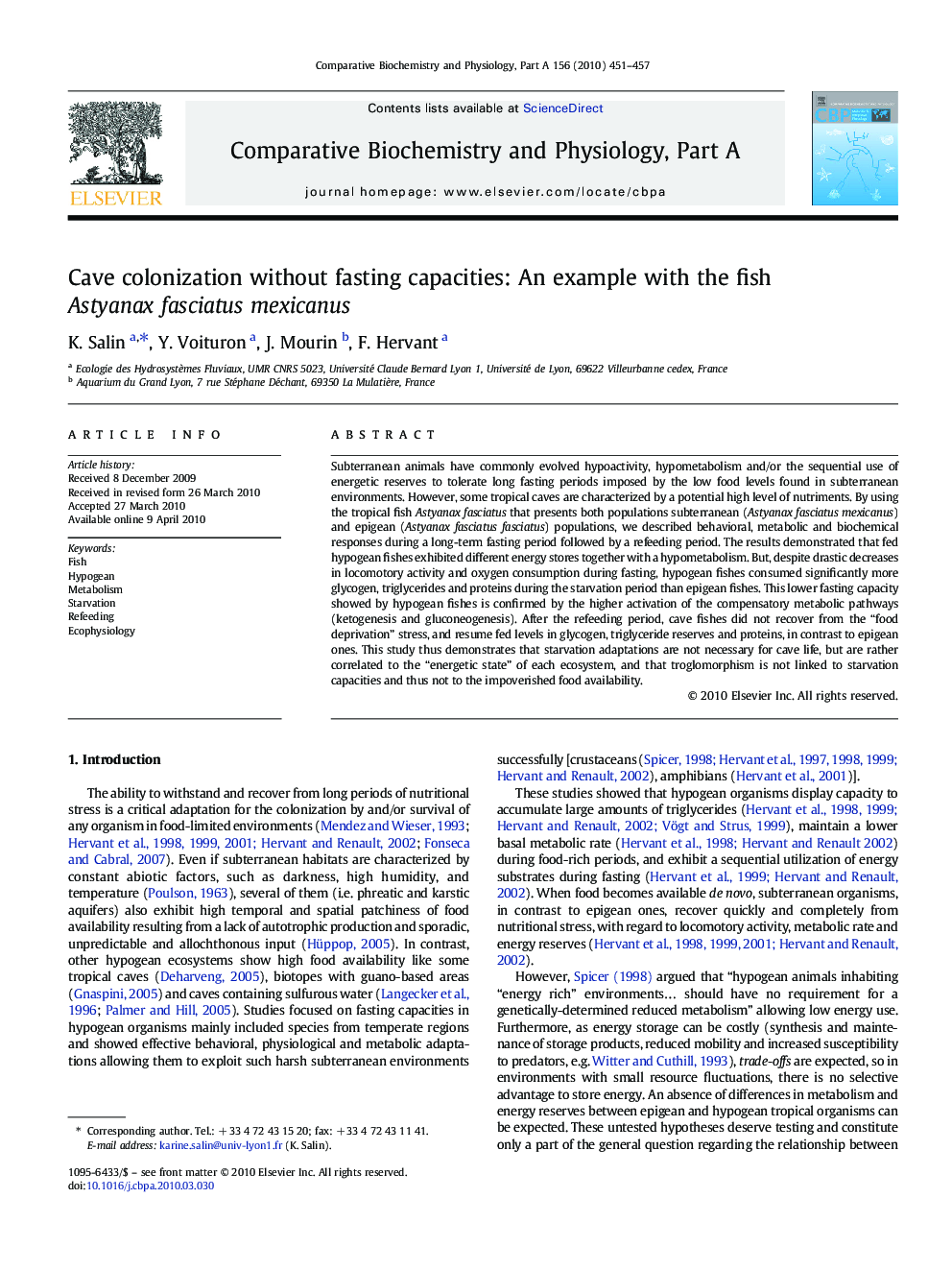| Article ID | Journal | Published Year | Pages | File Type |
|---|---|---|---|---|
| 1972960 | Comparative Biochemistry and Physiology Part A: Molecular & Integrative Physiology | 2010 | 7 Pages |
Subterranean animals have commonly evolved hypoactivity, hypometabolism and/or the sequential use of energetic reserves to tolerate long fasting periods imposed by the low food levels found in subterranean environments. However, some tropical caves are characterized by a potential high level of nutriments. By using the tropical fish Astyanax fasciatus that presents both populations subterranean (Astyanax fasciatus mexicanus) and epigean (Astyanax fasciatus fasciatus) populations, we described behavioral, metabolic and biochemical responses during a long-term fasting period followed by a refeeding period. The results demonstrated that fed hypogean fishes exhibited different energy stores together with a hypometabolism. But, despite drastic decreases in locomotory activity and oxygen consumption during fasting, hypogean fishes consumed significantly more glycogen, triglycerides and proteins during the starvation period than epigean fishes. This lower fasting capacity showed by hypogean fishes is confirmed by the higher activation of the compensatory metabolic pathways (ketogenesis and gluconeogenesis). After the refeeding period, cave fishes did not recover from the “food deprivation” stress, and resume fed levels in glycogen, triglyceride reserves and proteins, in contrast to epigean ones. This study thus demonstrates that starvation adaptations are not necessary for cave life, but are rather correlated to the “energetic state” of each ecosystem, and that troglomorphism is not linked to starvation capacities and thus not to the impoverished food availability.
